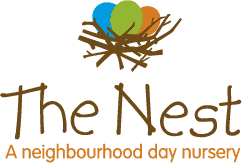Legislation and Impact on Childcare Practice
The Health and Safety at Work Act 1974. ( Great Britain)
Everyone working in early years is responsible for maintaining a safe and healthy environment for all, and work carried out is carried out in a way which is safe. All employees are required to ensure the safe maintenance of the nursery, store materials and cleaning products safely, undertake training, report any issues, follow the settings health and safety policy and procedures.
Childcare Act 2006 ( England)
Promote children’s health and safeguarding by implementing the Early years foundation Stage (EYFS) framework. To be trained in paediatric first aid, have evacuation training, check the identity of all visitors, keep records of all accidents, incidents, accidents at home, and emergencies. Meet the ratios required. Carry out risk assessments.
Reporting of injuries, diseases and dangerous occurrences regulations 1995 ( RIDDOR)
Outbreaks of infectious diseases to be reported, serious accidents and deaths reported. Employers must keep a record of this.
Food hygiene regulations ( England) 2006
All staff to have training and a certificate if preparing meals including snacks, storing food at correct temperatures, taking temperatures of fridge & freezer, taking temperatures when cooking, keeping kitchen and all surfaces clean. Hand washing and PPE. Also being aware of children’s dietary requirements.
Control of substance hazardous to health regulations 2002 ( COSHH)
Correct storage , keeping cleaning products away from the children, and know how use chemicals in the workplace, what to do if ingested or splashed on skins and in eyes or inhaled.
Health & Safety regulations ( first aid) 1981
All staff to have first aid, at least one person on premises or when outdoors to have this qualification. First aid kept up to date, every three years.
Manual Handling operation regulations 1992
All staff to read the settings policy, how to pick up and put down a child correctly, and any lifting or carrying objects. Things may need to be put in place, for example if a child is too heavy to be picked up to put on the changing station, to change them on the floor.
Fire precaution regulations 2005
Having fire extinguishers, evacuation procedures in place, and fire drills, recording the fire drills. FD 30 FIRE doors in place, closing doors. Not having lots of items hanging from the ceiling and fire regulation furnishings.
Statutory Framework for the Early years, EYFS .England
The safeguarding and welfare requirements are set out. The premises and equipment should be clean and safe and providers aware of the requirements of health and safety legislation. Promoting Childrens health safeguarding and well being. Policies in place and all staff to follow them
All settings are required by law to have policies and procedures.
The Nest’s health and safety policy includes risk assessments, maintenance, illnesses, and outings as well as internet safety. These are set in place to keep children and the workforce safe.
All policies and procedures are reviewed regularly.
Parents also are to be made aware of their responsibilities, such as closing stair gates and not letting other people in the building.
Risk management is everyones responsibility.
